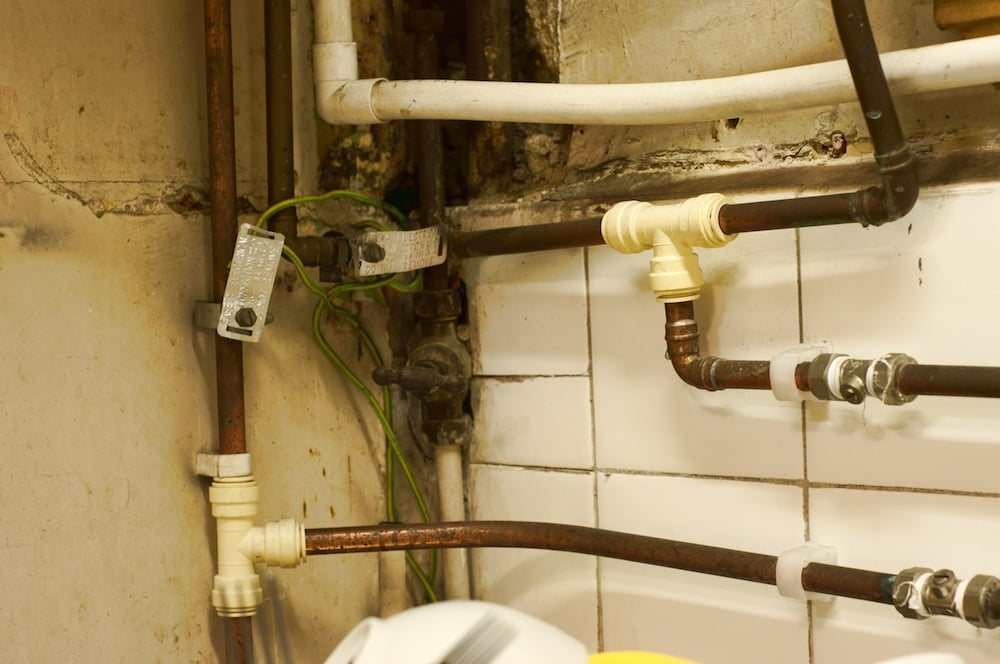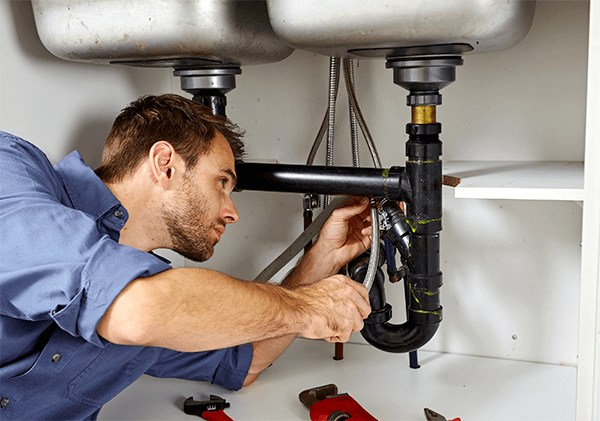Expert Advice on Managing Plumbing in Older Homes
Expert Advice on Managing Plumbing in Older Homes
Blog Article
Any individual is bound to have their personal opinion about Plumbing Problems In Old Homes.

Older homes typically include charm, personality, and history, but they can additionally bring a host of pipes problems. Whether you're managing aging pipes, low tide pressure, or leakages, understanding just how to attend to these usual issues is vital to keeping a secure and practical home. In this overview, we'll discover the typical pipes obstacles dealt with by older homes and offer useful services to maintain your pipes in top form.
Recognizing Typical Pipes Issues
Aging Pipelines
Among the most usual concerns in older homes is aging pipelines. Depending upon the period in which your home was developed, the pipelines might be made from materials that have actually deteriorated gradually, such as galvanized steel, cast iron, or even lead. These materials can wear away, end up being fragile, or create leaks, causing water damage and possible health hazards.
Low Water Pressure
If you're experiencing low water stress, maybe due to natural resources, deterioration inside the pipes, or old fixtures that are no longer working successfully. This can be a significant hassle, particularly in locations like showers and sinks.
Dripping Pipelines
Leakages are another frequent problem in older homes, often triggered by corroded or worn-out pipes. Even little leaks can cause substantial water damage, mold development, and boosted water costs otherwise addressed quickly.
Obsolete Components
Outdated plumbing components such as taps, toilets, and showerheads not only look old yet might additionally be much less reliable, vulnerable to leakages, or inappropriate with modern plumbing standards.
Pipe Rust
Rust is a typical problem in older pipelines, specifically those made from galvanized steel or actors iron. Rusty pipes can restrict water flow, cause discoloration, and at some point bring about leakages or pipeline ruptureds.
Examining the Condition of Your Plumbing
Checking Noticeable Pipes
Start by examining any type of visible pipes in your home, such as those in cellars, crawl spaces, or under sinks. Try to find indications of rust, leaks, or rust, which can show underlying concerns.
Looking for Leaks
Check for leakages by inspecting locations around taps, bathrooms, and under sinks. You can likewise monitor your water meter prior to and after a period of no water use to find concealed leaks.
Water Quality Screening
Older pipes can affect the top quality of your water. Conduct a water quality examination to check for contaminants such as lead, corrosion, or other impurities that might be presented by aging pipes.
Solutions for Usual Plumbing Concerns
Changing Aging Pipes
If your home has old, weakening pipes, take into consideration replacing them with modern-day products like copper or PEX. This can be a significant financial investment, yet it will certainly prevent future concerns and improve the safety and security and dependability of your plumbing system.
Dealing With Low Water Stress
To take care of low water pressure, beginning by cleaning or replacing old components and eliminating mineral buildup in the pipelines. If the trouble continues, it might be essential to replace areas of corroded pipelines.
Fixing and Replacing Dripping Pipelines
For small leakages, you can use pipe clamps or epoxy putty as a short-lived repair. Nonetheless, it's best to replace leaking pipelines entirely to stay clear of further damages.
Updating Fixtures
Updating old components to contemporary, water-efficient versions can improve your home's plumbing performance and lower water consumption. Try to find components with the WaterSense label for the very best effectiveness.
Managing Pipe Rust
If your pipelines are corroded, replacing them with corrosion-resistant products like copper, PVC, or PEX is the most effective option. Regular evaluations and water top quality upkeep can help stop better rust.
When to Call a Specialist
While some pipes issues can be managed with do it yourself remedies, there are times when it's best to call a professional. If you're handling significant leakages, considerable corrosion, or are uncertain concerning the condition of your pipes, a certified plumbing can supply experienced analysis and repair service.
Preventive Upkeep Tips
Normal Assessments
Regularly evaluate your pipes system for indications of deterioration. Capturing problems early can stop pricey fixings down the line.
Water Stress Policy
Ensure your water pressure is within the recommended range to avoid stressing your pipes and components. A plumbing can set up a pressure regulator if needed.
Water Quality Upkeep
Mount water filters or softeners if your water quality is poor. This can protect your pipelines and components from damages triggered by difficult water or impurities.
Positive Pipe Replacement
If your home has older pipelines, think about positive substitute before major concerns emerge. This can conserve you from emergency repairs and water damages.
Final thought
Managing plumbing concerns in older homes calls for a mix of caution, precautionary upkeep, and timely upgrades. By understanding the usual difficulties and understanding when to seek specialist aid, you can ensure your plumbing system remains practical and reputable for many years to come.
Common Plumbing Issues in Older Homes and How to Fix Them
Owning an older home in Australia comes with its unique charm and a set of challenges, especially when it comes to plumbing. The Sunshine Coast has many older properties that can harbour plumbing problems that aren t just inconvenient but potentially costly. Here s a look at some common plumbing issues in older homes and expert advice on how to handle them.
Outdated Piping Materials
Many older homes were built with galvanised steel, cast iron, or even lead pipes, materials that are far from ideal by today s standards. Galvanised pipes are prone to corrosion and clogging, while lead pipes pose serious health risks.
How to Fix:
Replacing old pipes is a job for a professional. Upgrading to copper or PVC piping not only enhances water quality and flow but also increases the property s safety and value. If you suspect your home has outdated materials, a licensed plumber can conduct a thorough inspection and recommend the best course of action.
Corrosion and Pipe Degradation
Over time, exposure to water and minerals can cause pipes to corrode, leading to leaks, bursts, and water contamination. Corrosion is especially common in homes over 50 years old.
How to Fix:
Regular inspections can catch early signs of corrosion. If corrosion is found, the affected section of piping often needs to be replaced. For homes with extensive corrosion, a complete plumbing overhaul might be necessary. It s crucial to consult with a plumbing expert to understand the extent of the issue.
Tree Root Intrusion
Older neighbourhoods usually have mature trees whose roots can intrude into pipe lines, causing blockages or damage. This is particularly problematic for sewer lines, where roots seek out water sources.
How to Fix:
A plumber can use a specialised camera to inspect sewer lines for root intrusion. If roots are a problem, methods like root cutting or hydro-jetting can clear the obstruction. In severe cases, part of the pipe may need replacing. Consider root barriers around the piping to prevent future issues.
Inadequate Water Pressure
Low water pressure in older homes can be due to various factors, including corroded water lines, sediment build-up in pipes, or outdated fixtures.
How to Fix:
First, check if the low pressure is isolated to one area or throughout the house. Replacing old fixtures can sometimes resolve the issue. However, if the problem is more widespread, it might be due to sediment or corrosion. Flushing the system or replacing the affected pipes usually restores normal pressure. Again, a professional assessment is advisable.
Outdated Fixtures
Older homes often feature fixtures that are not only visually dated but functionally inefficient. This includes everything from toilets and taps to showerheads and washing machine hoses.
How to Fix:
Updating these fixtures can improve both water efficiency and the aesthetic appeal of your home. Modern fixtures are designed to conserve water, which can significantly reduce your water bill and lessen your environmental impact.
Conclusion
Maintaining the plumbing in an older home requires a proactive approach. Regular checks and updates are key to preserving these beautiful properties. If you re facing plumbing issues in your older home, it s best to call on experienced professionals like Green & Gold Plumbing & Gas. With the right expertise, even the most daunting plumbing problems can be resolved, ensuring that your home s character is maintained while its functionality is enhanced.
https://gandgplumbing.com.au/common-plumbing-issues-in-older-homes-and-how-to-fix-them/

I hope you liked our article about Main Plumbing Issues Found in Old Houses. Many thanks for taking time to read our piece of content. Liked our blog posting? Please share it. Help others discover it. We recognize the value of your readership.
Go Services Report this page